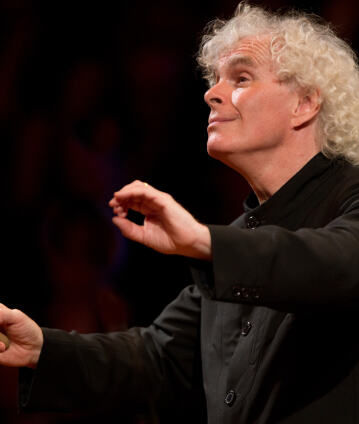Interview
Mark-Anthony Turnage in conversation with Sarah Willis Simon Rattle dirige Dvořák, Turnage et Brahms

La musique classique offre rarement autant de bonne humeur que dans les sérénades du XVIIIe siècle. Ce concert dirigé par Simon Rattle montre comment l’ingéniosité post-romantique a su renouveler le genre. Antonín Dvořák, par exemple, a enrichi la forme traditionnelle de couleurs bohémiennes dans sa Sérénade pour instruments à vent. Johannes Brahms est allé encore plus loin en donnant une dimension quasi symphonique à sa Sérénade n° 2. Le programme propose également une nouvelle œuvre de Mark-Anthony Turnage.
Berliner Philharmoniker
Sir Simon Rattle
© 2017 Berlin Phil Media GmbH
Interviews liées au concert
Artistes
Nos suggestions
- Concert de la Saint-Sylvestre 2016 avec Simon Rattle et Daniil Trifonov
- Les adieux de Simon Rattle avec la Sixième de Mahler
- Concert de la Saint-Sylvestre 2013 avec Simon Rattle
- Simon Rattle’s inaugural concert from 2002 with Mahler’s Fifth Symphony
- Simon Rattle dirige « Le Sacre du printemps »
- Simon Rattle dirige Beethoven et Mendelssohn à la Waldbühne